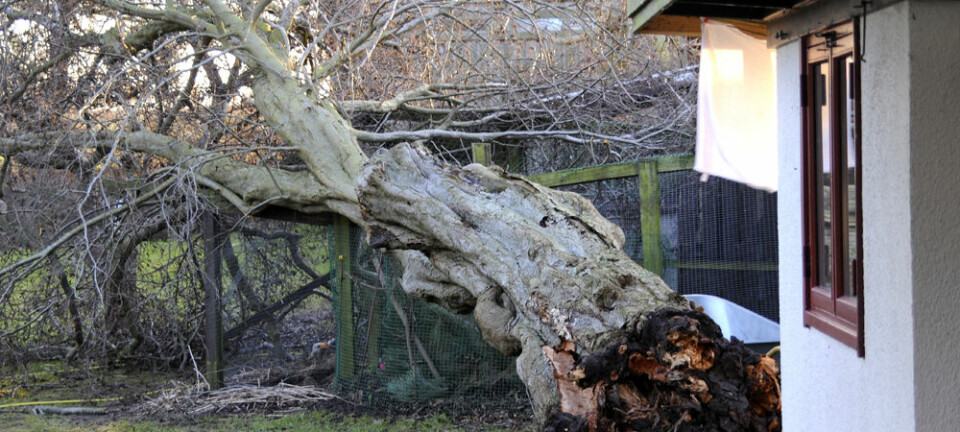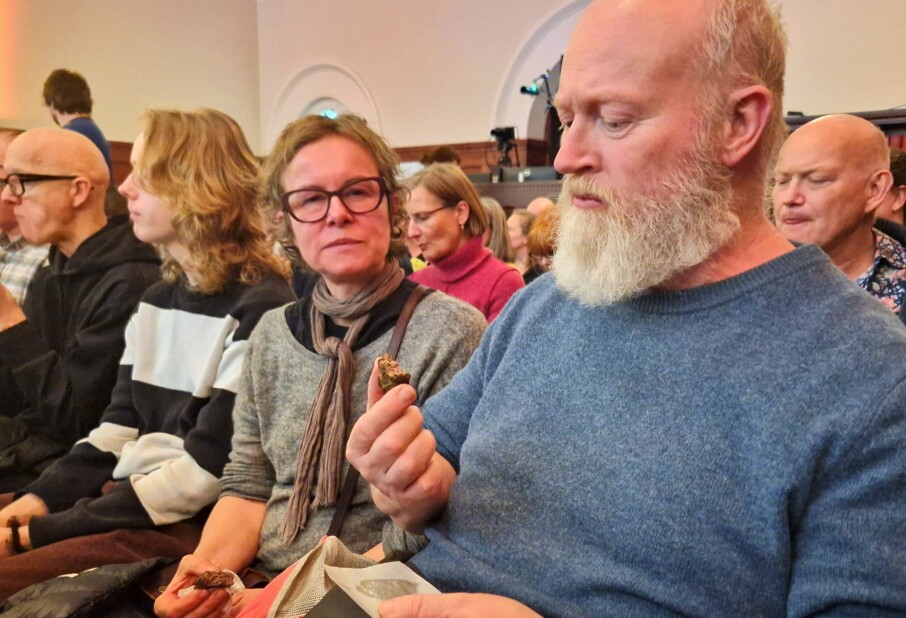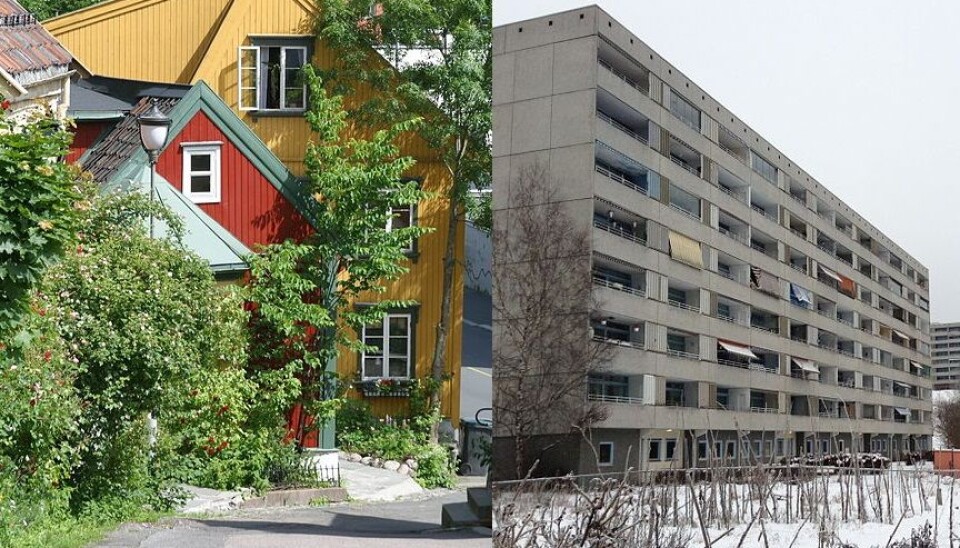
Wood poised to scrape the sky
How about living in an eight-storey wooden house? A maxi version of plywood makes it possible. But is wood more idyllic than concrete?
Denne artikkelen er over ti år gammel og kan inneholde utdatert informasjon.
Which makes you feel better: a neighbourhood of small, low wooden buildings or suburbs bristling with soaring high-rise flats?
Wood-built houses tend to have the aesthetics and charm on their side. But you cannot construct a whole city of single-storey houses in wood, each enveloped in its own verdant garden. Over half the people on the planet now live in urban communities and more are pouring into cities every year. Urban planners need to know how and where to make room for growth.
What if we could have the best of both worlds? Researchers at the Oslo School of Architecture and Design (AHO) are encouraging more use of wood in the city. Fire proofing has made headway since great blazes turned Norway’s wooden towns into charcoal, time and time again through the Middle Ages and up into the 1700s. To prevent further loss of life and property, statutes were passed prohibiting wooden houses within central city limits. But the technology used today in wood buildings has made these concerns obsolete.
“Now we can build denser and higher structures in wood than what used to be feasible. We need to develop solutions which exploit the technical and architectural possibilities of wood. This will give us light buildings which can be designed and expressed diversely,” says Marius Nygaard.
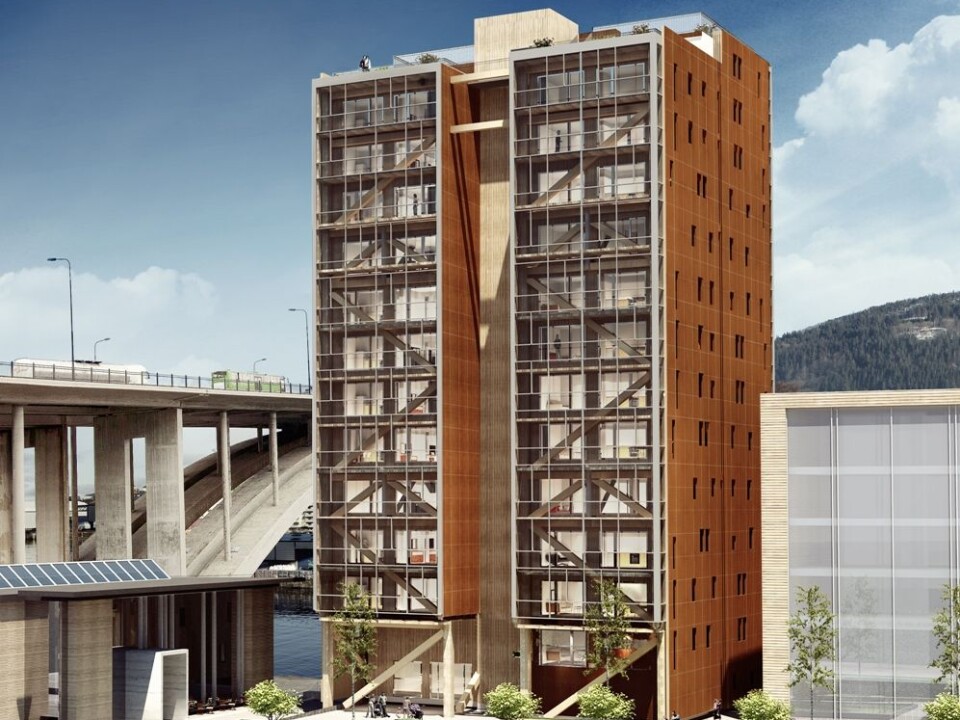
Nygaard is a professor at AHO and heads the project “More use of wood in urban areas”.
“We need the qualities found in dense small villa communities. But we cannot plagiarise these forms. Larger wooden buildings have a character of their own that provide new architectural expressions,” says Nygaard.
Plywood on steroids
Nygaard and colleagues from research institutes around Norway are investigating how architects, builders and developers can increase the use of wood in Norwegian cities― places where buildings are generally made of concrete, steel, bricks and glass.
Several tall wooden buildings are now going up in Norway. They include two student housing blocks in Ås, a town outside Oslo, each eight storeys tall and almost completely made of wood. Bergen is anticipating what will be the world’s tallest wooden building: 14 floors in a material that serves as a natural carbon dump.
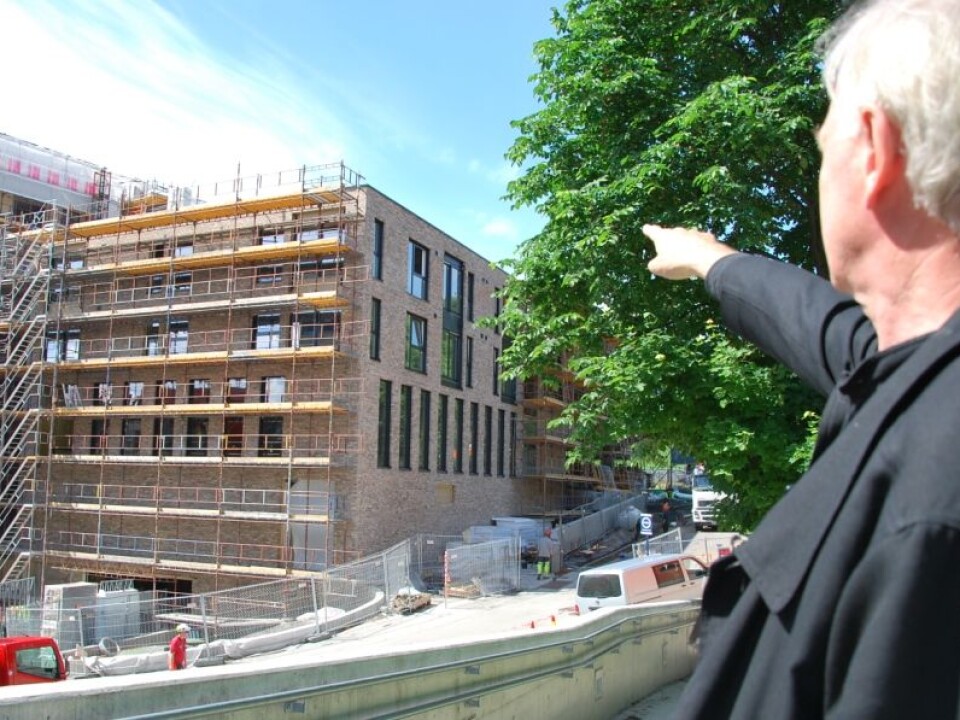
The technology uses what is called massive wood. It’s like a version of large cross-laminated plywood.
All planks have fibres running in the direction the tree’s growth. If you glue blocks of wood together so these fibres criss-cross one another you can make long and extremely solid and durable wooden materials.
Wood makes more possible
Nygaard counts the floors of a constructions project with a brick façade right next to his office.
“Six to nine floors. This could have been built in wood and it could even have looked just the same, if that were their goal,” sier Nygaard.
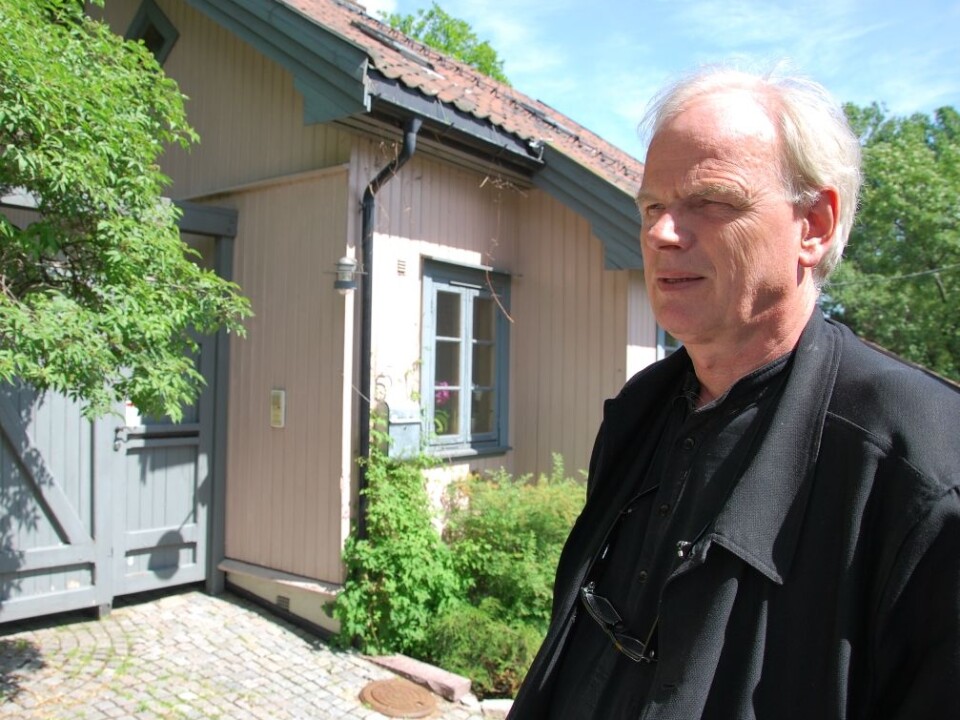
“But had they used wood as the construction material the architects would have enjoyed the opportunity to experiment with other solutions. Wood is easy to shape and it gives opportunities to tailoring sections of the building.”
If you want an arched element in concrete you need a mould to cast it in an as an element, explains Nygaard. This means you should repeat this shape in concrete several times to justify the cost of the mould. That’s not an issue in wood. Computer guided milling and laser cutting makes it easier to create individually shaped pieces.
The uncertainty principle as it applies in construction
To date there are few Norwegian construction companies working with massive wood. It’s a question of demand – you don’t start making products before you know you have a customer base.
“Wood is still infrequently used in urban areas because we have so little experience with tall wooden buildings. What happens if we replace a concrete wall with a wooden wall− how does it perform with regard to moisture and temperature fluctuations. What’s its load-bearing capacity? We need more documentation,” says the researcher.
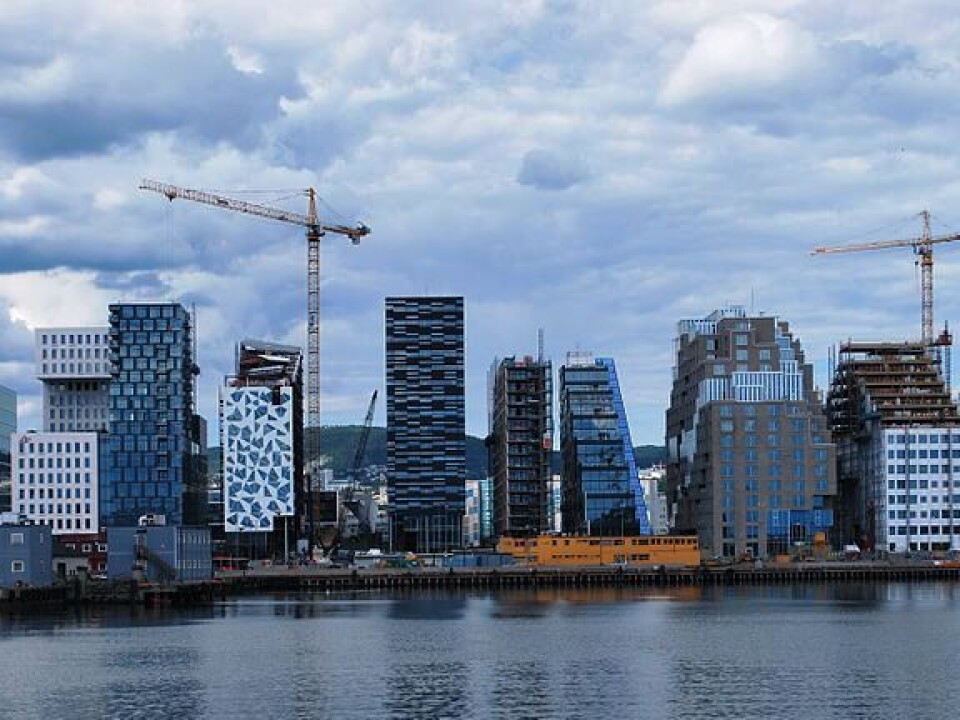
“Builders and developers are usually the ones who select the materials, and if they are uncertain about the construction time and results of alternatives, they raise their prices. So wood does not get used as much as it could be.”
Ugly buildings can also be made in wood
“We have to develop an urban wooden architecture. You can build unsightly blocks in wood too. Wood is not automatically beautiful,” says Nygaard.
Cities need fine examples showing what can be done before they are going to start switching to wood constructions. Architects, builders and entrepreneurs are often inspired by each other. When someone finds exciting solutions these can be spread quickly.
As long as steel and concrete and brick dominate urban development areas such as Oslo’s newest development Bjørvika, these are the materials which will set the standards.
“We need good architectural examples, where the quality of small houses on fine premises with terraces and the warmth of the wooden material is combined with the density of block buildings. Novel solutions should be tried out in architectural projects. If not, they will just continue lying around as models on shelves,” asserts Nygaard.
“In the course of the next ten years I think we will be using wood as an equal material and an alternative to steel and concrete, at least up to heights of nine storeys,” predicts Nygaard.
--------------------------------
Read the Norwegian version of this article at forskning.no
Translated by: Glenn Ostling







